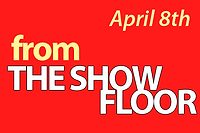Ashland Showcases Rheology Modifiers, New Biocides and ART

At Booth 1541, Ashland Specialty Ingredients, a commercial unit of Ashland Inc., is introducing three Nuosept™ preservative grades and Application Reader Technology (ART), a device for quantifying the characteristics of paint application feel. In addition, Ashland is featuring an extensive range of rheology modifiers, including Aquaflow™ nonionic synthetic associative thickeners (NSATs), Natrosol™ hydroxyethylcellulose (HEC) and Natrosol Performax™ HEC, for architectural coatings systems.
The new Nuosept preservative grades offer a broad spectrum of antimicrobial activity against mold, yeast and bacteria.
Nuosept 515RX high-performance liquid biocide is a combination of isothiazolines MIT and CMIT. It controls organisms quickly and is effective over the pH range normally seen in architectural coatings formulations. It has no formaldehyde, no organic solvents and does not impart color or odor.
Nuosept BMc-412 preservative combines three isothiazoline active ingredients to boost antimicrobial activity in water-based products. It is a unique blend of BIT, MIT and CMIT, which have complementary properties. The result is a broader spectrum of activity than standard BIT/MIT preservatives, with better and faster control.
Nuosept BT10 preservative allows coatings manufacturers the flexibility to more precisely add biocide to their formulations.
Ashland is also rolling out ART, a new service to help coatings chemists objectively determine paint application feel according to key parameters. First, ART will help formulators select the best rheology modifier for their coating system. Second, Ashland will use ART to help coatings manufacturers maintain consistency in their formulations by establishing baselines on various characteristics and properties.
Aquaflow NSATs perform across an extensive range of latex resin chemistries, paint PVC ranges and tinting levels. Using a combination of low-shear effective and high-shear effective Aquaflow NSATS, formulators can achieve superior flow and leveling and efficient high-shear viscosity build for precise rheology control.
The company is showcasing three Natrosol rheology modifiers, each imparting different benefits to coatings quality or production.
- Designed for economical thickening in a wide range of paints, Natrosol HEC imparts excellent stability to paint, color compatibility and water retention.
- Natrosol Performax HEC disperses easily for faster, more flexible paint production. It enables coatings producers to add HEC in dry form at multiple points in the manufacturing process without lumping. As a result, manufacturers reduce energy usage and costs, and increase plant output.
- Natrosol Plus hydrophobically modified hydroxyethylcellulose (HMHEC) delivers excellent spatter resistance, high-shear viscosity, in-can feel, brushability, flow and leveling, and color acceptance.
Rounding out its offerings, Ashland is presenting its Advantage™ and Drewplus™ foam-control agents, Jaypol™ dispersants and Dextrol™ and Strodex™ surfactants.
- Advantage foam-control agents (FCA) help manufacturers minimize entrained air and resultant foam during production.
- Drewplus defoamers for architectural and industrial coatings control both process and application foam in latex paint systems and offer quick bubble break for knockdown and macrofoam, and dissolution deaerators that continue to perform even after the coating begins to set.
- Jaypol dispersing agents improve stability and shelf life of waterborne coatings. Easy to handle, they are highly effective, thus economical; compatible with glycols; and can deliver a very high pigment load.
- Dextrol and Strodex specialty surfactants provide wetting and stabilization for paints, colorants and emulsion polymerization. They enhance color development and in-can stability.
Looking for a reprint of this article?
From high-res PDFs to custom plaques, order your copy today!




